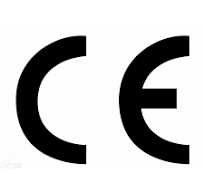-
About us
-
Product
-
News&Events
Understanding the Materials Behind EMS Fat Burning Machines
2025-03-22
Electromyostimulation (EMS) fat burning machines have gained popularity in the health and wellness industry for their non-invasive approach to fat reduction and muscle toning. Understanding the materials used in these devices is crucial for healthcare professionals looking to incorporate such technology into their practice. The effectiveness and safety of EMS machines hinge significantly on the quality and properties of the materials employed in their construction.
One of the primary materials used in EMS fat burning machines is high-grade plastic, often utilized for the housing of the device. This plastic is typically lightweight yet durable, providing a robust design that withstands regular usage. The selection of plastic is critical, as it must be biocompatible and capable of withstanding various cleaning and sterilization processes without degrading. Such properties ensure that the machines maintain their integrity and safety standards over time.
Conductive gel pads are another key component, as they facilitate the transmission of electrical impulses from the machine to the skin. These pads are generally made from silicone or other skin-friendly materials that offer a good balance between adhesion and comfort. The quality of the conductive material is vital, as it directly impacts the effectiveness of the EMS treatment. High-quality gels will ensure consistent conductivity, which is essential for delivering optimal results during sessions.
Moreover, the electrodes used in EMS machines are often composed of metals such as stainless steel or high-quality conductive fabrics. These materials are chosen for their excellent electrical conductivity and resistance to corrosion. The design and placement of these electrodes can significantly influence the effectiveness of the treatment, as they must be strategically positioned to target specific muscle groups effectively.
In addition to these materials, the internal components of EMS fat burning machines, including the circuit boards and wiring, are typically made from high-quality electronics-grade materials. This ensures reliability, optimal performance, and safety during operation. Understanding these components can help professionals assess the quality of different machines in the market and make informed decisions when selecting equipment for their practice.
To summarize, the materials used in EMS fat burning machines play a crucial role in their functionality and overall performance. By focusing on high-quality, biocompatible plastics, conductive gels, and reliable electronic components, manufacturers can create devices that deliver effective treatment while ensuring safety and comfort for patients. Healthcare professionals must consider these factors when evaluating EMS machines to optimize patient outcomes and enhance their service offerings.
One of the primary materials used in EMS fat burning machines is high-grade plastic, often utilized for the housing of the device. This plastic is typically lightweight yet durable, providing a robust design that withstands regular usage. The selection of plastic is critical, as it must be biocompatible and capable of withstanding various cleaning and sterilization processes without degrading. Such properties ensure that the machines maintain their integrity and safety standards over time.
Conductive gel pads are another key component, as they facilitate the transmission of electrical impulses from the machine to the skin. These pads are generally made from silicone or other skin-friendly materials that offer a good balance between adhesion and comfort. The quality of the conductive material is vital, as it directly impacts the effectiveness of the EMS treatment. High-quality gels will ensure consistent conductivity, which is essential for delivering optimal results during sessions.
Moreover, the electrodes used in EMS machines are often composed of metals such as stainless steel or high-quality conductive fabrics. These materials are chosen for their excellent electrical conductivity and resistance to corrosion. The design and placement of these electrodes can significantly influence the effectiveness of the treatment, as they must be strategically positioned to target specific muscle groups effectively.
In addition to these materials, the internal components of EMS fat burning machines, including the circuit boards and wiring, are typically made from high-quality electronics-grade materials. This ensures reliability, optimal performance, and safety during operation. Understanding these components can help professionals assess the quality of different machines in the market and make informed decisions when selecting equipment for their practice.
To summarize, the materials used in EMS fat burning machines play a crucial role in their functionality and overall performance. By focusing on high-quality, biocompatible plastics, conductive gels, and reliable electronic components, manufacturers can create devices that deliver effective treatment while ensuring safety and comfort for patients. Healthcare professionals must consider these factors when evaluating EMS machines to optimize patient outcomes and enhance their service offerings.
 |
 |
 |
 |
Contact us
ADD:2rd floor, Building No.7, Maohuagongchang, Nancaizhen, Shunyi District, Beijing, China.
Phone:0086-15210506323
Whatsapp:0086-15210506323
Email:nancy@sanhebeauty.com
© COPYRIGHT 2024 Sanhe Beauty S & T Co.,Ltd ALL RIGHTS RESERVED Powered by : www.300.cn SEO
Business license

MESSAGE




